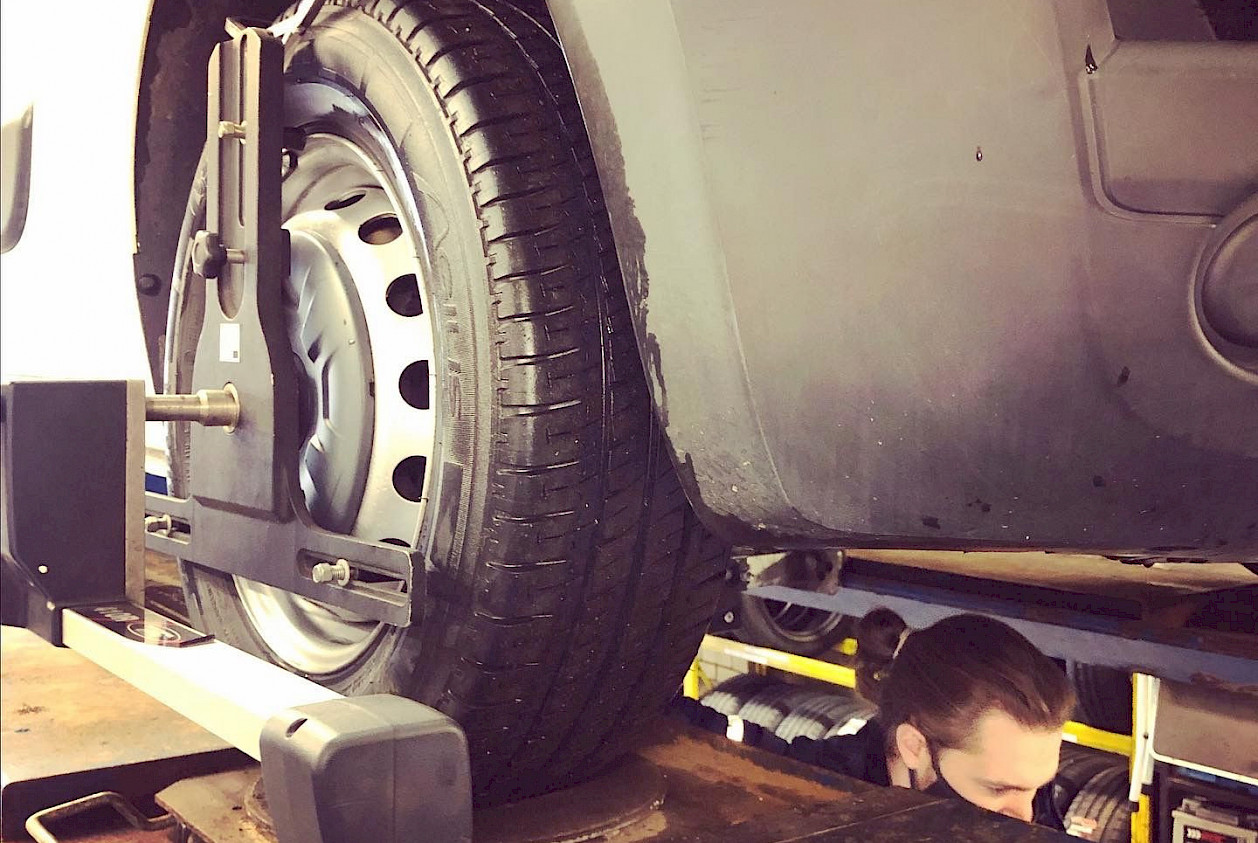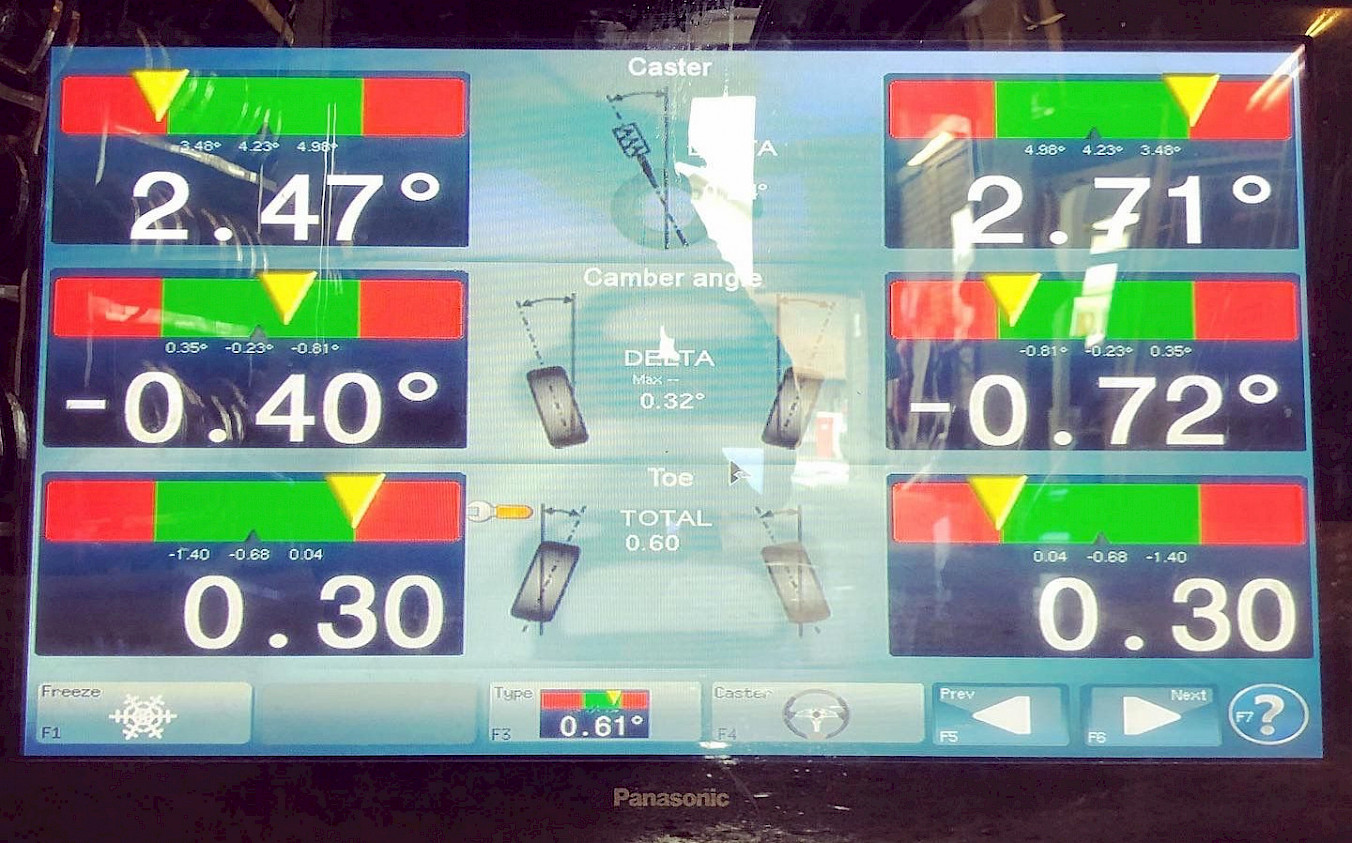Why is Wheel Alignment So Important?

For many vehicle owners, wheel alignment is not something we think about on a regular basis. We check oil levels, tyre pressure and tread but wheel alignment is often not considered until something goes wrong.
It is incredibly important to make sure your vehicle’s wheels are correctly aligned as per the manufacturer recommendations as alignment ensures that your vehicle is both safe and efficient in its performance.
How do you know if your wheels are not aligned?
Anyone who has ever visited the forums of their local area will know that bad roads and potholes are a heatedly discussed issue on social media platforms. Not only do poorly maintained roads cause great frustration for people, but they are the worst enemy for your vehicle's wheels. Hitting potholes, bumping curbs or regular passage along poorly surfaced roads can not only damage your tyres but can also affect your wheel alignment. Even the tiniest amount of misalignment can cause issues and it is recommended that you get your wheel alignment checked every 6000 miles or so.
Correct wheel alignment can prevent premature tyre wear as well as make your vehicle drive smoother and use less energy (depending on the level of misalignment, you could be using way more fuel than is necessary!)
So, not only is having your wheel alignment checked an important part of vehicle maintenance, but it can prevent longer term additional expenses such as additional tyre changes due to premature wear and will ensure that your vehicle handles safely and efficiently.
Recognise the symptom of misaligned wheels
You may experience some issues if your wheels become misaligned.
- Pulling
- Uneven Tyre Wear
- Off-Centre Steering
- Squealing Tyres
- Steering Wheel Vibration
The most obvious being that your car or van may start pulling to the right or left even when your steering wheel is in a central position.
A less obvious indicator that your vehicle needs wheel alignment is that you may notice uneven wear on your tyres or more rapid wear than expected. The reason for this is that the tyres aren’t in direct contact with the road surface at the correct angle. Ensuring that your wheels are aligned will extend the life of your tyres.
If you are driving straight but your steering wheel leans off centre then there is a high chance that your wheels are misaligned. Equally, if you experience vibration in your steering wheel, it could be the case that your wheels are not correctly aligned. Finally, if you experience squealing tyres, especially when pulling away, then it is highly recommended that you get your wheel alignment checked.
By checking your wheel alignment you can also ensure a safe, efficient and comfortable experience with your vehicle because you reduce the impact of misalignment on the performance of your vehicle as a whole.
For Example,
Fuel Efficiency
This is a biggie for many of our Stratford Tyres clients. By making sure that your wheels are aligned correctly significantly reduces rolling resistance which ultimately leads to more efficient fuel consumption and a happier bank account for you!
Safety
It goes without saying that anything which creates steering problems is a serious safety concern for vehicle owners. Misaligned wheels do just that! By identifying and correcting your wheel alignment you can ensure the vehicle steers safely and you can remain in control.
Environmental Impact
Going back to the impact of wheel alignment on fuel consumption, correct alignment reduces your vehicles carbon emissions as well as improving fuel economy. Win-win.
Smooth driving
Everyone wants to experience a smooth and comfortable drive, correct wheel alignment will prevent you fighting against your steering pulling and make your ride smooth every time!

What is Wheel Alignment?
Wheel Alignment is a technical concept but below are some common terms you may see associated with Wheel Alignment.
Camber
Camber is essentially the ‘tilt’ of the wheel. If the top of the wheel tilts away this is known as positive camber and if it points inwards this is known as negative camber. Visually, it is not always noticeable to the naked eye but if the camber of a wheel is not correct this can cause issues such as excessive wear to tyres and pulling to the vehicle.
Caster
It can be tricky to visualise Caster but it is the angle which identifies the backward and forward slope which is drawn through the upper and lower steering pivot points. If this angle is not correct, it affects the stability of steering - think about shopping trolley wheels! It is vital that the caster angle is correct between the suspension strut and tyre contact point to enable full vehicle control (particularly on corners)
Cross Camber
Quite simply, this is the camber of wheels from one side of the vehicle to the other side. Again, difficult to tell visually whether this is aligned correctly so professional checks are recommended.
Toe
This term refers to the wheel angle in relation to the center point of the vehicle. The easiest way to envision this is to imagine you are looking down at your own feet, if you point your feet so your big toes point towards each other that is ‘toe-in’ and the opposite is ‘toe-out’. Ideally, your tyres should be perpendicular to the central line so toe-in or toe-out would be a misalignment which causes excessive tyre wear and less fuel efficiency.
Thrust Angle
If we think of the centre line of the vehicle again, the trust angle is the direction of the back wheels in relation to this line. As with the Toe, we want this to be straight and if the angle is incorrect the vehicle may move sideways from the rear.
Tyre Balancing
Although different from wheel alignment, tyre or wheel balancing services are often performed alongside alignment. Balancing compensates for any weight imbalance in the tyre or wheel combination. The two types of imbalance are Static and Dynamic. Static balance refers to balance on the vertical plane, if there is movement here this can cause vibration. Dynamic balance addresses two planes, the vertical and the lateral movement. Incorrect balance on either type can cause premature tread wear and require tyre replacement.
Both services are available at Stratford Tyres!

Wheel Alignment at Stratford Tyres
Wheel alignment and balancing are essential services to proper vehicle management but contrary to popular belief they don't need to cost the earth! In fact, regular checks of wheel alignment and tyre balance can help save money in the long run as it will aid in the longevity of your tyres and can even affect the amount of fuel you use! Our team of professionals are masters of the specialist alignment equipment and will have you on the road in no time! We recommend that wheel alignment is undertaken every 5000 to 6000 miles - don't wait for there to be a problem! Contact us today to make your appointment!